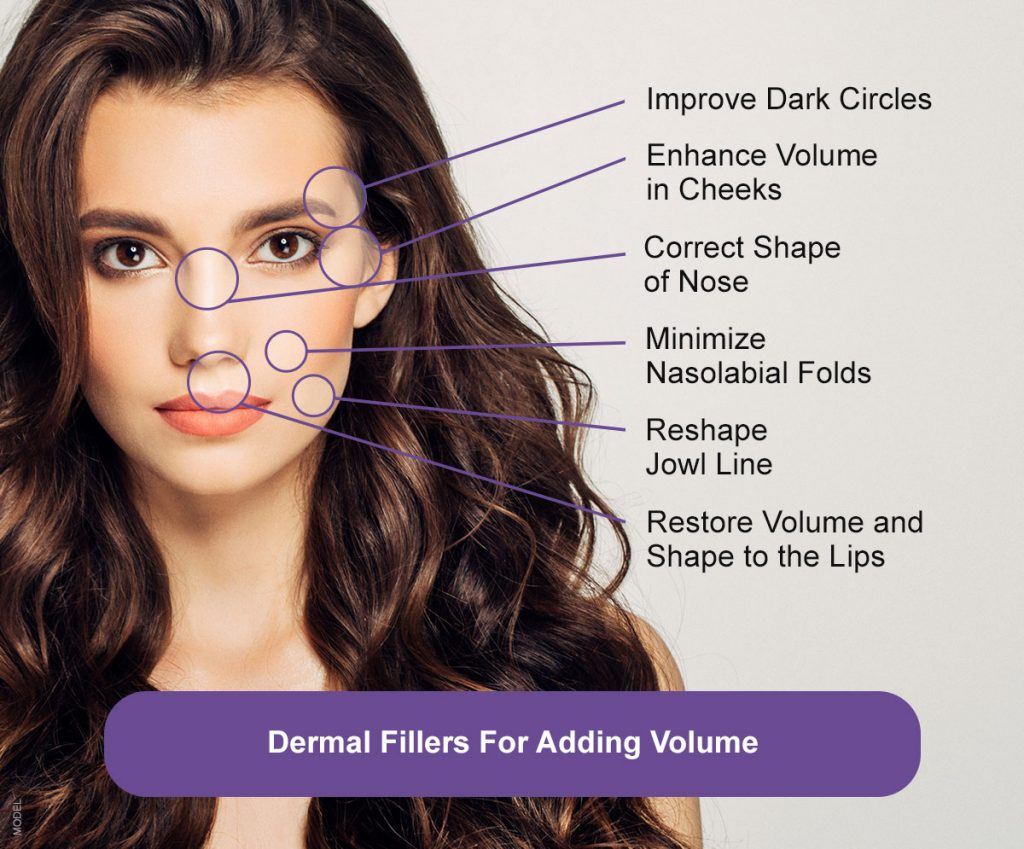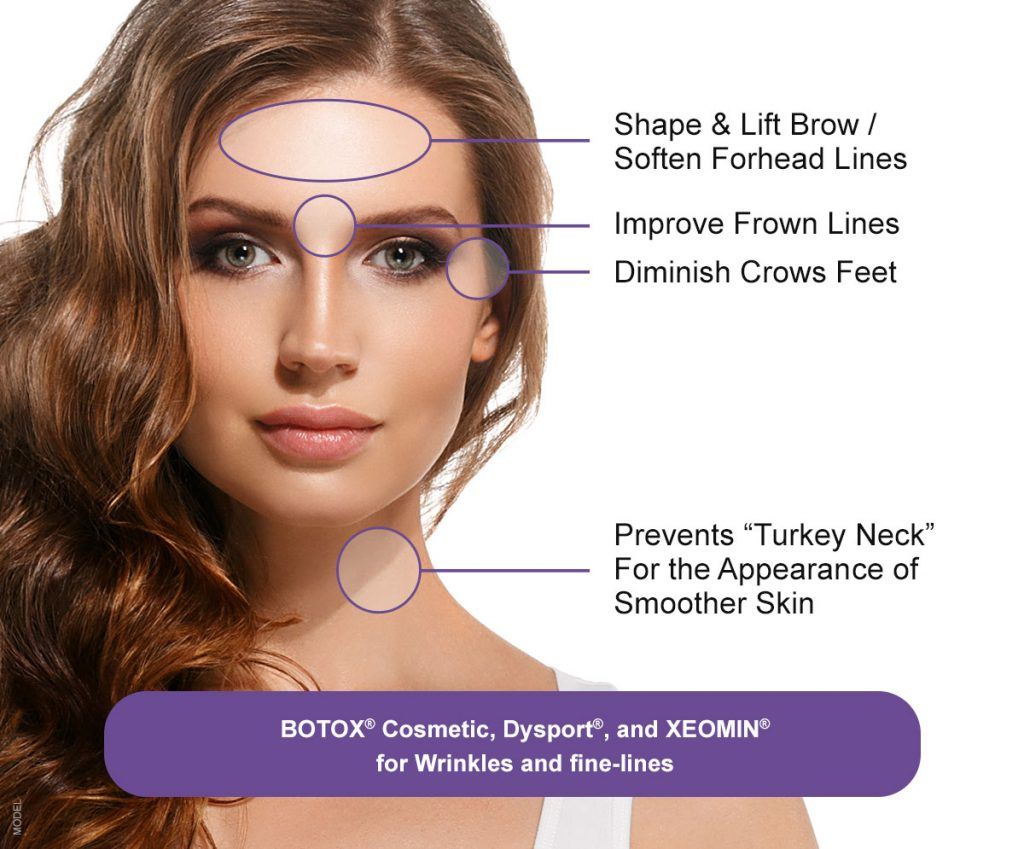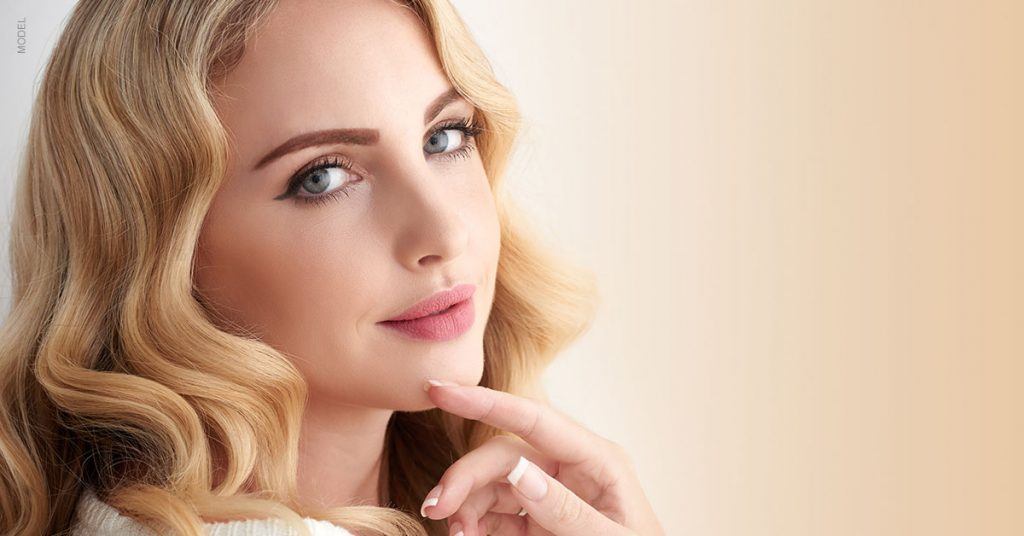Rarely do treatments that have already displayed sustained success experience a spike in popularity. Cosmetic injectables such as BOTOX and dermal fillers have long been the most popular cosmetic procedures throughout the U.S. and the world. Still, a new generation of patients are discovering these treatments. We’ve also seen an increase in the number of patients seeking dermal fillers and BOTOX at our Rochester, NY, dermatology practice.
With that ever-increasing popularity in mind, we’re providing this ultimate guide to injectables, where women and men interested in these treatments can access useful information about the various types of fillers, BOTOX, and similar aesthetic products.
What Are Cosmetic Injectables?
Injectable treatments designed to minimize early signs of aging include a menu of dermal fillers and neurotoxins such as BOTOX, XEOMIN®, and Dysport®. KYBELLA®, which reduces the appearance of a double chin, is another injectable treatment.
Why Are Injectables So Popular?
Social media, of course, has fueled much of the increased interest in injectable treatments—especially among younger patients who follow celebrities on Instagram and other platforms. The increased use of Zoom for professional meetings and social gatherings at the start of the pandemic also prompted many people to notice wrinkles from a new perspective. In 2020 alone, more than 7.8 million BOTOX and dermal filler treatments were performed, according to the American Society of Plastic Surgeons.
Injectables are also highly effective at smoothing wrinkles and contouring facial features. Other benefits of cosmetic injectables include:
- Treatments are short and can be performed during your lunch break.
- Little to no downtime is needed. In most cases, you can go right back to your daily routine after treatment.
- You can see results quickly—almost immediately with some fillers and within a few days for BOTOX.
- Results are temporary so you can adjust your look as time goes on.
Types of Dermal Fillers
Not all fillers are the same, and they can serve different purposes. Different types of fillers include:
Hyaluronic acid (HA): These are the most common type of fillers, such as the collection of JUVÉDERM® and Restylane® products. HA is naturally found in the skin, with its main function being to retain water to keep your tissues well lubricated and moist. Fillers use a synthetic form of HA formulated in gels of varying consistencies to restore volume.
Poly-L-Lactic Acid (PLLA): This is used in the filler Sculptra® Aesthetic, which is approved by the FDA to treat nasolabial folds and sunken cheeks with results that can last up to 2 years. It works differently than HA fillers because the skin absorbs the tiny PLLA microparticles and restores volume by gradually stimulating the production of new collagen.
Revance TEOXANE® RHA fillers: Resilient hyaluronic acid (RHA) fillers have been used in Europe for years but have only recently been approved by the FDA for use in the U.S. This collection of fillers—RHA2, RHA3, and RHA4—are unique because the fillers stretch as the skin moves. This flexibility creates a natural look and feel.
Calcium hydroxylapatite: Used in RADIESSE®, this material is also found naturally in the body, and its calcium-based microspheres correct wrinkles and folds in the face and hands. Like Sculptra, it also stimulates the production of new collagen.
BOTOX vs. Fillers: What’s the Difference?
Wrinkles and fine lines are some of the earliest signs of aging, and they develop in different ways.
“Static” wrinkles: The natural aging process, along with sun exposure, causes the skin to begin losing tissue and slows the production of collagen and elastin. These two substances are the building blocks of smooth, elastic skin. Injecting dermal fillers into these static wrinkles and folds restores volume and creates a smoother, more youthful appearance.
“Dynamic” wrinkles: Often called “expression lines,” these wrinkles develop over a lifetime of squinting, frowning, appearing surprised, and changing our expressions in multiple other ways. The repeated movements of the skin gradually form wrinkles and lines, such as crow’s feet, worry lines, and horizontal forehead wrinkles. Neurotoxins such as BOTOX, XEOMIN, and Dysport prevent the nervous system from sending signals to the tiny facial muscles that contract and relax when we change expressions. By relaxing these muscles, the skin appears smooth. Read more about neuromodulators in our Ultimate Guide to BOTOX.
What Areas of the Face Do Injectables Treat?
Injectables can address virtually any aesthetic concerns patients have about their appearance. Combining fillers with BOTOX—a procedure called a liquid facelift—is a common choice for patients who want more comprehensive results.
Fillers
The areas treated by fillers include:
- Cheekbones
- Chin
- Nasolabial folds
- Lips
- Jawline
- Under the eyes (tear troughs)

Neuromodulators
BOTOX, XEOMIN, and Dysport can treat:
- Wrinkles around the eyes
- Forehead wrinkles
- “Orange peel” chin
- Overdeveloped masseter muscle (“chewing” muscle)
- Gummy smile

The most important thing to consider is finding an injector with the experience and technical skill to create your desired changes. Our practice’s experience using BOTOX dates back to the very first clinical trials conducted in the late 1980s. We’ve literally been performing BOTOX treatments since the beginning of its use, both as a therapeutic treatment and for cosmetic purposes.
Cost of Dermal Fillers and BOTOX
The cost of injectable treatments at our Rochester dermatology clinic varies depending on each patient’s individual needs. Our injectors discuss the cosmetic goals of the patient and examine the skin’s quality and texture before creating a customized treatment plan designed to meet those goals. We also work with CareCredit® if you are interested in financing your treatments.
Are Injectable Treatments Painful?
Even though many people associate injections with discomfort, most patients tolerate injectable treatments quite well. Virtually all fillers used these days are pre-mixed with lidocaine, a local anesthetic that minimizes discomfort. Additionally, we use a numbing cream on the treatment area first. As we make injections, the anesthetic in the filler spreads so each injection hurts less than the one before. Neurotoxin injections involve even less discomfort, and icing the treatment area is usually all that’s necessary to ease any soreness.
What Happens During My First Consultation?
The consultation is an important part of the overall treatment experience. It’s the chance for you to ask questions, describe your concerns, and explain the results you hope to achieve. Some patients bring “wish” photos with them showing people—often celebrities—as examples of their goals. Our aesthetic specialists want all of our patients to feel comfortable and will explain in detail what you can expect during the treatment. They examine your skin and facial structure so they can create a unique treatment plan.
What Happens After the Treatment?
Your injector will describe some of the common side effects that typically occur after injectable procedures, including:
- Swelling
- Bruising
- Redness
In most cases, these side effects resolve on their own within a day of the treatment. Patients usually return to work or their other normal activities immediately after their procedure.
What’s the Best Aftercare for BOTOX and Fillers?
You can help minimize potential side effects by propping yourself up on more pillows than normal overnight and avoiding salty, bloating foods. It’s also important not to rub or press on the swollen areas because that pressure can cause more swelling and move fillers away from the treatment area.
If you’re new to injectable treatments or have already been getting filler or BOTOX injections, we’d love to discuss your treatment goals at Dermatology Associates of Rochester. You can contact us using the online form to request a consultation or call our clinic at (585) 272-0700 to schedule an appointment.










Leave a Reply